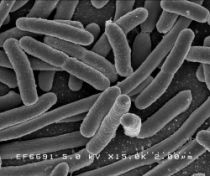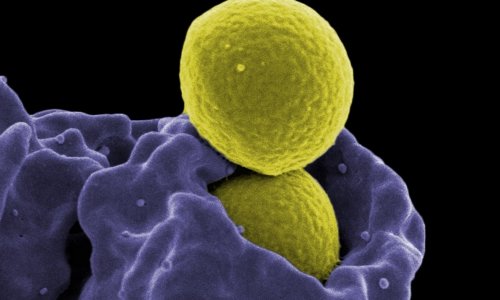New ingredient in paints kills superbugs
Scientists found out that particles of titanium dioxide, which is e.g. contained in the white lines at tennis courts, can kill bacteria and destroy dirt when activated by fluorescent light. Added in paints, the nanotitanium can kill superbugs on all surfaces in hospitals.

With rising concern about the spread of hospital superbugs, healthcare trusts are increasingly looking to find better ways to maintain hygienic standards in hospitals. The same concerns are driving developments in the food industry and in pharmaceutical companies. These new nanoparticle paints could provide a simple and cost-effective solution, according to a presentation made at the Society for General Microbiology's Autumn meeting, September 9, at Trinity College, Dublin.
The new paints contain tiny particles of titanium dioxide (TiO2), which is the dazzling white compound often used as a brightener in commercial paints, and in powder form it's used to mark the white lines in tennis courts. Now, scientists have discovered that nanoparticle-sized forms of TiO2 can kill bacteria and destroy dirt when they absorb ultraviolet light energy from the sun. They produce active molecules which clean up the painted surfaces.
"It would be best if the titanium was antibacterial at wavelengths of light that you find indoors, such as fluorescent light, so that paints containing the nanoparticles could be used in hospitals and other places where a clean environment is important," said Lucia Caballero from Manchester Metropolitan U. (UK).
The researchers looked at the survival of the food poisoning bacterium Escherichia coli on different formulations of paints containing the titanium nanoparticles under different types and intensities of lights. "We found that paints containing TiO2 are more successful at killing bacteria if the concentration of the nanoparticles is stronger than in normal paint," said Lucia Caballero, and "best results showed that all the E. coli were killed under ordinary fluorescent lights."
Other common additives in paints, such as calcium carbonate, silica, and talc, were found to actually decrease the antibacterial efficiency (kill rate) of the paint -- by up to 80% in the case of calcium carbonate, Caballero noted. "Our tests on a commercially available paint showed that the ability of the paint to inactivate bacteria was massively reduced compared with a paint formulation which did not contain such additives."
"Facilities such as bathrooms and child care facilities, public conveniences and domestic bathrooms would all benefit from good hygiene control," said Caballero. "In all these places, surface hygiene could be improved by the action of fluorescent light on catalytic surfaces such as paints containing nanotitanium. This would slow down contamination and save on the costs of cleaning maintenance."
Picture Credit: Rocky Mountain Laboratories, NIAID, NIH
26.09.2008





